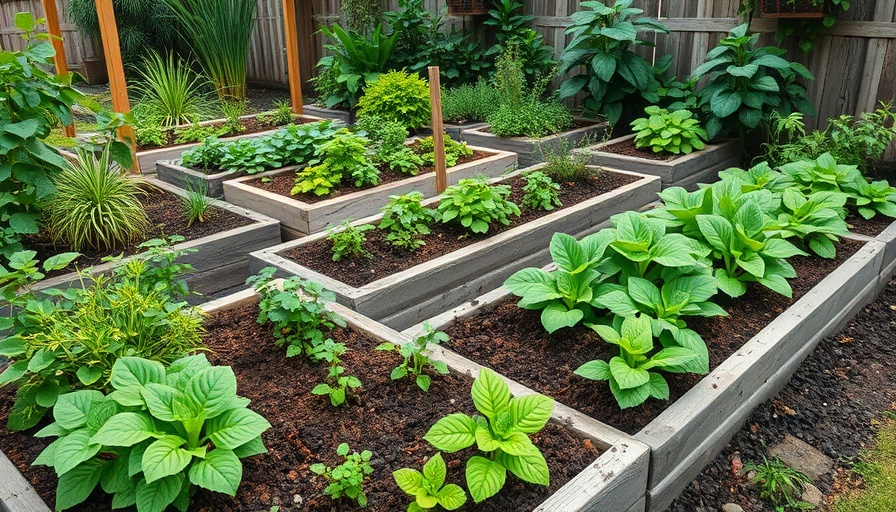
The Perfect Space: Choosing a Location for Your Raised Garden Bed
Before diving into the construction of your DIY raised garden bed, the selection of the right location is paramount. A good spot will make all the difference in the success of your garden. Aim for a place that receives at least six to eight hours of sunlight daily, as most plants thrive in these conditions. Consider accessibility: you’ll want to have access to water and a minimum of three feet around the bed for easy maneuverability.
Design Flexibility: Crafting Your Ideal Garden Bed Size
One of the beauties of DIY projects is the flexibility to design exactly what suits your needs. A common mistake is choosing a width that’s too wide; ideally, keep the bed width to about four feet or less. This ensures that every inch is reachable for planting and maintenance without requiring awkward stretching or hopping over edges. Reference your creativity while considering the height; a bed between 12 to 24 inches tall can be a game changer for your back as it reduces the need to stoop.
Essential Tools and Materials
When constructing your raised garden bed, having the right tools and materials is essential for a long-lasting structure. You'll need rot-resistant lumber—cedar and redwood are wonderful choices for durability. Three-inch exterior deck screws or lag bolts are ideal for securing the structure. Don’t forget landscape fabric or cardboard if you want to suppress weeds effectively!
Building Techniques: Step-by-Step to a Successful Garden
Once you've gathered your materials, it's time to turn your plans into action. Start by measuring and marking your site clearly, then cut your lumber according to your bed's design. Secure your frame firmly using screws, ensuring it's level before adding soil to guarantee proper drainage. The right soil mix can set the foundation for a fruitful garden; aim for a combination of compost, topsoil, and organic matter for rich nutrient content.
Why DIY Raised Garden Beds Last For Years
A DIY raised garden bed is not only a beautiful addition to your outdoor space but also offers practical benefits. For starters, the elevated structure helps soil warm more quickly in spring and drains effectively during heavy rains, minimizing waterlogging. Plus, because you won't be walking on the soil within the garden bed, it remains aerated and loose, encouraging robust root growth.
Making It Your own: Personalizing Your Raised Bed
Don't forget to inject a bit of your personality into your garden bed. Use trellises for climbing plants like beans or cucumbers to optimize space. You can also paint or stain your wood to fit the aesthetic of your yard. The raised bed can evolve into a lovely focal point, drawing interest and beauty into your outdoor retreat.
Embracing Sustainable Practices in Your Garden
As you embark on your gardening journey, consider incorporating sustainable practices. Utilize organic soils and pesticides, embrace companion planting, or even set up a rainwater collection system to conserve water. Every small effort contributes to a healthier environment while enhancing the productivity of your vegetable patch.
Get Inspired and Start Creating!
Building a DIY raised garden bed is an exciting venture that fits into a sustainable lifestyle. Not only do you create an environment for cultivation, but you also cultivate a passion for gardening. Let Us Design, Plan & Build Your Next Home or Remodel! Call 831-521-7729.
 Add Row
Add Row  Add
Add 




 Add Row
Add Row  Add
Add 

Write A Comment